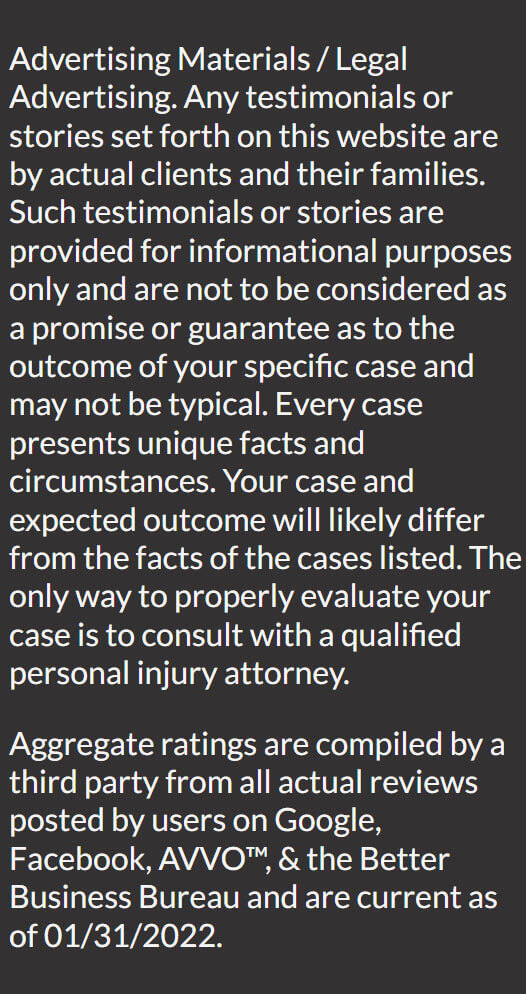





Personal injury victims can share fault for their accidents in several scenarios. If you share some of the blame for your accident, you may still obtain payment for the harm you suffered. However, the amount of payment you are awarded can be limited.
In cases involving negligence by multiple persons, Indiana courts will award damages based on each party’s percentage of fault. However, those who are considered to be over 50% responsible for their accidents will be restricted from pursuing claims against other parties. During your free case review, our team can analyze the circumstances of your case to determine how damages may be apportioned.
If you were hurt because of another party’s negligence, get help from our experienced Indiana personal injury attorneys at Wruck Paupore by calling (219) 322-1166.
There are several ways that victims can share fault for their accidents in Indiana. Fortunately, even if you are partially to blame for your harmful accident, you may still recover compensation for your injuries. However, the amount of damages you are awarded may be reduced proportionately.
Indiana courts abide by the doctrine of “modified comparative fault” when apportioning damages in personal injury cases. In other words, damages are awarded based on each party’s percentage of blame. For example, if you are 15% liable for your car crash while the other driver is 85% at fault, they will have to pay for 85% of the damages you sustained while you are left to account for the remaining 15%.
It is important to note that victims who are over 50% responsible for their accidents will be prevented from recovering payment from any other parties. At-fault parties often try to shift blame onto victims in personal injury cases in order to avoid paying for the damages that are owed.
Accordingly, support and guidance from our Indianapolis personal injury lawyers can be highly valuable when pursuing your potential claim. Our team can collect and preserve the information required to prove your case. Further, we can employ effective strategies to disprove any alternative theories of fault.
There are several ways that fault may be shared for certain accidents. For instance, the following are all examples of accidents caused by contributory or comparative negligence:
In a car accident, if one driver runs a red light and another is speeding, both parties may share fault. Even if the speeding driver couldn't avoid the collision because of the red-light runner, they might still be found partially at fault because of their excessive speed.
Another example is when a driver changes lanes without signaling and strikes a speeding car in the adjacent lane. In such a case, both drivers may share fault for the collision because of their traffic violations.
In slip and fall cases, comparative fault can come into play if the injured party was distracted or not paying attention. For instance, if someone slips on a wet floor but was texting on their phone at the time, their damages might be reduced because of their own inattention.
Furthermore, comparative fault may become an issue if a person slips and falls in a store but was wearing inappropriate footwear for the conditions, like high heels on a rainy day. In such a scenario, the injured party's choice of footwear may be considered by a jury as to whether that choice was unreasonable.
If a pedestrian is struck by a car while jaywalking, they may be deemed partially responsible for their injuries. In that case, the at-fault driver may argue that the pedestrian's disregard for traffic laws contributed to the accident.
Furthermore, fault may be shared for a collision if a pedestrian ignores a "walk" signal at an intersection and walks into oncoming traffic. In this case, both the pedestrian and the driver may be to blame.
Also, if a cyclist fails to obey traffic signals and collides with a vehicle, both parties may share fault for their crash. The cyclist's failure to follow the rules of the road could be considered to be partially or entirely at fault.
For instance, a cyclist may ride on the wrong side of the road and sustain a crash with a distracted driver. In that case, both the cyclist's wrong-way riding and the driver's distraction may be considered factors that contributed to the accident.
In a truck accident, fault may be shared if a speeding truck driver is struck by a vehicle that was following too closely. In that case, both the truck driver’s excessive speed and the other motorist’s tailgating could be seen as causes of the accident at issue.
Another example may involve a truck driver who failed to properly secure cargo that fell onto a tailgating driver’s car. In such a case, both the truck driver's negligence and the following driver's failure to maintain a safe distance may have led to the crash.
Finally, there are many ways that fault can be shared for motorcycle collisions. For instance, fault may be shared if a drunk or distracted driver struck a speeding motorcyclist. Fortunately, the team at our firm can help victims of such accidents fight for the full range of damages they are owed.
The time limit to file a personal injury case in Indiana is governed by I.C. § 34-11-2-4(a)(1). Typically, victims will have two years from the date of their accident to file their claims.
Still, in cases involving comparative fault, establishing fault may be more complicated. Victims who share blame for their accidents may have to spend more time building their claims. Therefore, if you need to file a personal injury case involving contributory negligence in Indiana, you should begin working on your case as soon as possible.
Seek assistance from our experienced Gary, IN personal injury lawyers by calling Wruck Paupore today at (219) 322-1166.
Don is a founding partner and one of the nation’s top-ranked personal injury litigators. He is a member of the Multi-million Dollar Advocates Forum, which includes less than 1% of the nation’s trial lawyers, and awarded the highest ranking given by Martindale Hubbel and AVVO.
More importantly, Don understands representing personal injury victims is about more than recovering the best settlement: it’s about helping clients get back on their feet and supporting them in every aspect of their recovery.

In nearly all cases, our clients seek compensation from the wrongdoer’s insurance company. Before forming Wruck Paupore, Jason worked for a prominent law firm representing some of the world’s largest insurers. This experience gives Jason a deep understanding of the insurance industry and the strategies it uses to pay injury victims as little as possible.
Jason -- and our entire team -- put this inside knowledge to work to force insurance companies to pay what is actually owed. Often, we use the insurance company’s own tactics against them as we fight for the full compensation our client deserves.

For more than four decades, Keith has been fighting for injury victims. During that time, he’s watched the insurance industry change, with insurers now more interested in protecting their stock price than treating injury victims fairly.
Since the beginning, Keith has put people first. From his childhood in Gary, Indiana during the 1960’s and working his way through law school, Keith has risen to become one of the Midwest’s most respected trial lawyers. He has never forgotten that being a lawyer is about helping people -- and seeing injury victims through struggles in a way that could change their lives forever.
Over the decades, Keith, Don and Jason have fought relentlessly for clients, even when other lawyers have said the case was impossible to win.


© 2025
Terms of Service | Privacy Policy | Resources | Blog | Sitemap

© 2022 Wruck Paupore PC
Terms of Service | Privacy Policy